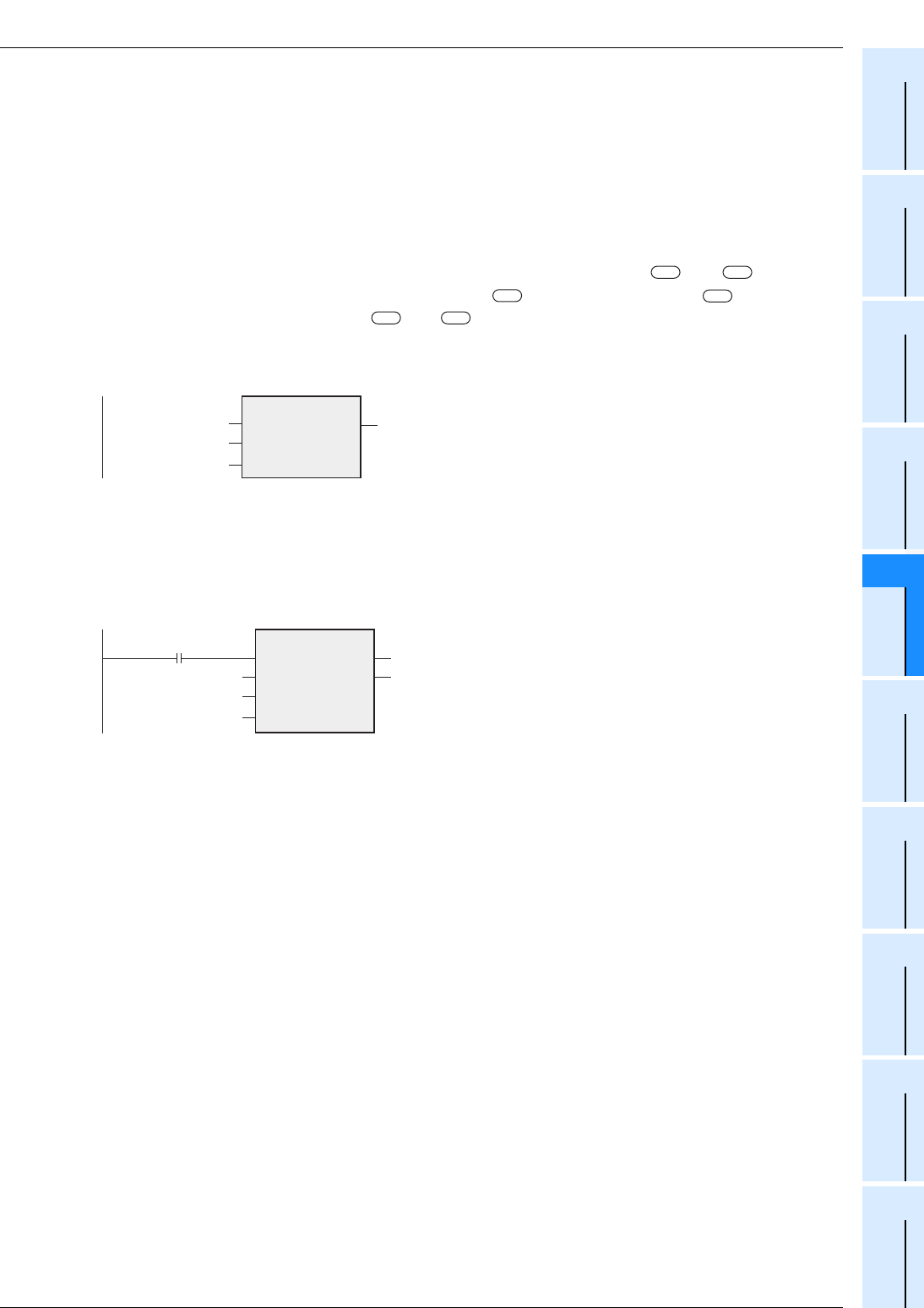User's Manual
Table Of Contents
- Front Cover
- Manual number
- Table of Contents
- Positioning of This Manual
- Related Manuals
- Generic Names and Abbreviations Used in Manuals
- 1. Outline
- 2. Function List
- 2.1 Type Conversion Functions
- 2.2 Standard Functions Of One Numeric Variable
- 2.3 Standard Arithmetic Functions
- 2.4 Standard Bit Shift Functions
- 2.5 Standard Bitwise Boolean Functions
- 2.6 Standard Selection Functions
- 2.7 Standard Comparison Functions
- 2.8 Standard Character String Functions
- 2.9 Functions Of Time Data Types
- 2.10 Standard Function Blocks
- 3. Function Construction
- 4. How to Read Explanation of Functions
- 5. Applied Functions
- 5.1 Type Conversion Functions
- 5.1.1 BOOL_TO_INT(_E)
- 5.1.2 BOOL_TO_DINT(_E)
- 5.1.3 BOOL_TO_STR(_E)
- 5.1.4 BOOL_TO_WORD(_E)
- 5.1.5 BOOL_TO_DWORD(_E)
- 5.1.6 BOOL_TO_TIME(_E)
- 5.1.7 INT_TO_DINT(_E)
- 5.1.8 DINT_TO_INT(_E)
- 5.1.9 INT_TO_BOOL(_E)
- 5.1.10 DINT_TO_BOOL(_E)
- 5.1.11 INT_TO_REAL(_E)
- 5.1.12 DINT_TO_REAL(_E)
- 5.1.13 INT_TO_STR(_E)
- 5.1.14 DINT_TO_STR(_E)
- 5.1.15 INT_TO_WORD(_E)
- 5.1.16 DINT_TO_WORD(_E)
- 5.1.17 INT_TO_DWORD(_E)
- 5.1.18 DINT_TO_DWORD(_E)
- 5.1.19 INT_TO_BCD(_E)
- 5.1.20 DINT_TO_BCD(_E)
- 5.1.21 INT_TO_TIME(_E)
- 5.1.22 DINT_TO_TIME(_E)
- 5.1.23 REAL_TO_INT(_E)
- 5.1.24 REAL_TO_DINT(_E)
- 5.1.25 REAL_TO_STR(_E)
- 5.1.26 WORD_TO_BOOL(_E)
- 5.1.27 DWORD_TO_BOOL(_E)
- 5.1.28 WORD_TO_INT(_E)
- 5.1.29 WORD_TO_DINT(_E)
- 5.1.30 DWORD_TO_INT(_E)
- 5.1.31 DWORD_TO_DINT(_E)
- 5.1.32 WORD_TO_DWORD(_E)
- 5.1.33 DWORD_TO_WORD(_E)
- 5.1.34 WORD_TO_TIME(_E)
- 5.1.35 DWORD_TO_TIME(_E)
- 5.1.36 STR_TO_BOOL(_E)
- 5.1.37 STR_TO_INT(_E)
- 5.1.38 STR_TO_DINT(_E)
- 5.1.39 STR_TO_REAL(_E)
- 5.1.40 STR_TO_TIME(_E)
- 5.1.41 BCD_TO_INT(_E)
- 5.1.42 BCD_TO_DINT(_E)
- 5.1.43 TIME_TO_BOOL(_E)
- 5.1.44 TIME_TO_INT(_E)
- 5.1.45 TIME_TO_DINT(_E)
- 5.1.46 TIME_TO_STR(_E)
- 5.1.47 TIME_TO_WORD(_E)
- 5.1.48 TIME_TO_DWORD(_E)
- 5.2 Standard Functions Of One Numeric Variable
- 5.3 Standard Arithmetic Functions
- 5.4 Standard Bit Shift Functions
- 5.5 Standard Bitwise Boolean Functions
- 5.6 Standard Selection Functions
- 5.7 Standard Comparison Functions
- 5.8 Standard Character String Functions
- 5.9 Functions Of Time Data Types
- 5.1 Type Conversion Functions
- 6. Standard Function Blocks
- Appendix A: Correspondence between Devices and Addresses
- Warranty
- Revision History
- Back Cover

5.6 Standard Selection Functions
163
FXCPU Structured Programming Manual
(Application Functions)
1
Outline
2
Function List
3
Function
Construction
4
How to Read
Explanation of
Functions
5
Applied
Functions
6
Standard
Function Blocks
A
Correspondence
between Devices
and Addresses
Cautions
1) Use the function having "_E" in its name to connect a bus.
2) When handling 32-bit data in structured programs, you cannot specify 16-bit devices directly, different
from simple projects. Use labels when handling 32-bit data.
You can specify 32-bit counters directly, however, because they are 32-bit devices.
Use global labels when specifying labels.
Program example
In this program, either one between the values stored in devices specified in and is output in
accordance with the value stored in a device specified in to a device specified in using the data
type of data stored in devices specified in and .
1) Function without EN/ENO(SEL)
2) Function with EN/ENO(SEL_E)
[Structured ladder]
[ST]
[Structured ladder]
[ST]
s2 s3
s1
d
s2 s3
SEL
g_bool1
g_word1
g_word2
_G
_IN0
_IN1
g_word3
g_word3:=SEL(g_bool1,g_word1,g_word2);
SEL_E
EN ENO
g_word3
g_bool1
g_bool2
g_word1
_G
_IN0
g_bool3
g_word2
_IN1
g_bool3:=SEL_E(g_bool1,g_bool2,g_word1,g_word2,g_word3);










